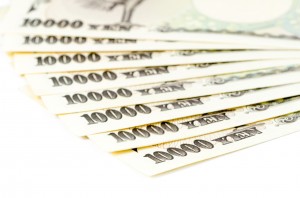Should you be taking a closer look at the Yen (JPY)?
 It’s the currency of the world’s third largest economy – and it remains the most traded currency out of Asia by some distance. If the Japanese Yen (JPY) doesn’t yet feature in your trading activity, is this the right time to change all that?
It’s the currency of the world’s third largest economy – and it remains the most traded currency out of Asia by some distance. If the Japanese Yen (JPY) doesn’t yet feature in your trading activity, is this the right time to change all that?
Reasons why you may have given Japan a wide berth…
With some currencies, there’s no need to look too far to keep track of the fundamentals. With GBP and USD especially, all the big announcements tend to make the headlines as a matter of course. The same is true with the Euro – and seasoned traders are now well used to reading the latest bailout drama on a day-to-day basis and making their trading decisions accordingly.
With the Japanese Yen, by contrast, it’s easy for the uninitiated to be put off. Even if you tend only to glance over the Asia Pacific pages, you’ve probably seen that the Japanese economic picture over recent years has been ‘not great’, with the country just about crawling out of recession over the last quarter. Then there’s the general impression that Japan has somehow had its day; that unlike its neighbours, has somehow never quite recovered from the East Asian property crash of the early nineties.
While it’s true that stagnation has featured heavily in the Japanese story over the last couple of decades, GDP per capita growth from 2001-2010, while weak in East Asian terms, still outpaced Europe and the U.S. The Japanese interest rate has been hovering around the zero mark since the mid-nineties. This is one of the biggest reasons why it remains a heavily traded currency; many traders borrow the Yen at virtually no cost and use it to invest in other, higher yielding currencies or non-Japanese bonds. The ‘story so far’ is therefore that the Yen has tended to be bought for the purpose of carry trade – not, generally, with appreciation in mind.
Where are we now? Abenomics explained.
Take a look at the 5-year JPY/USD chart and the assumption is likely to be that something must have happened in 2012 to kick-start a race to the bottom. That ‘something’ came with the re-election that year of Japan’s Prime Minister Shinzo Abe, who ushered in a new three-pronged strategy to jolt the country’s stagnant economy. These “three arrows” consist of fiscal stimulus, monetary easing and structural reforms.
The fiscal stimulus element has involved new government spending to stimulate demand, while the structural reform arrow has included a raft of regulations to make Japanese industries more competitive. So far as the Yen is concerned, it has been Abe’s policy of printing additional currency that has had the biggest impact. The first round of quantitative easing was announced in April 2013, whereby the BoJ would buy 60 to 70 trillion Yen of bonds a year. This was expanded in October last year when the BoJ announced it would now buy 80 trillion Yen of bonds a year.
To try and balance the country’s books and curb private spending, Abe’s government also introduced a consumption tax hike, which came into force in April of last year. This increase was regarded as one of the main contributory factors pushing the country back into recession last year.
 2015: is the turnaround in full swing?
2015: is the turnaround in full swing?
The weak Yen and tax hike both had the effect of curbing spending power, which has contributed to a decline in the country’s trade deficit. So far, 2015 has seen higher wages and a steady decline in the unemployment rate, which reached an 18-year low of 3.3% in April. A weak Yen has given exporters leeway to either cut prices or boost margins and the fact that the United States remains broadly on track has also played a role in encouraging Japan’s export rebound.
In January, the Japan Times was reporting predictions of between 1.5% and 2.0% GDP growth for the fiscal year ending in march 2015. As it turned out, GDP grew by an annualised 2.4% in the three months up to March, but the next couple of quarters are expected to be lacklustre. More stimulus – most likely in the form of a further QE boost, remains a real possibility later this year. A return to recession is considered unlikely for the foreseeable future, but ongoing recovery is expected to be slow and modest.
What does this mean for the Japanese Yen?
In an atmosphere of tentative recovery, the BoJ and government will be keen to avoid doing anything that might jeopardise export shipments. In short, a stronger Yen is not in Japan’s best interests right now. QE, however, can only go on for so long. Japan is the most debt-ridden of major economies, with a growing public debt of 230% of GDP. There are no immediate concerns that the country will find itself unable to service that debt, but it will have to be tackled at some point. One argument is that QE is a disincentive to reform as it means that the government can keep on issuing more bonds to finance itself despite a snowballing debt.
So the race to the bottom could be almost over. 2014 finished on a USD/JPY rate of 120. This year, JP Morgan and Goldman Sachs are both predicting a further weakening, suggesting annual finishing positions of Y125 and Y130 respectively. In terms of appreciation, 2016 is more likely to be the Yen’s year. As slow but sure growth becomes better established and as Japan’s trade balance swings back to surplus, next year is more likely to be the time when a strengthening Yen becomes part of the trading landscape.
Trade Forex using binary options at eToro;
Further reading:
